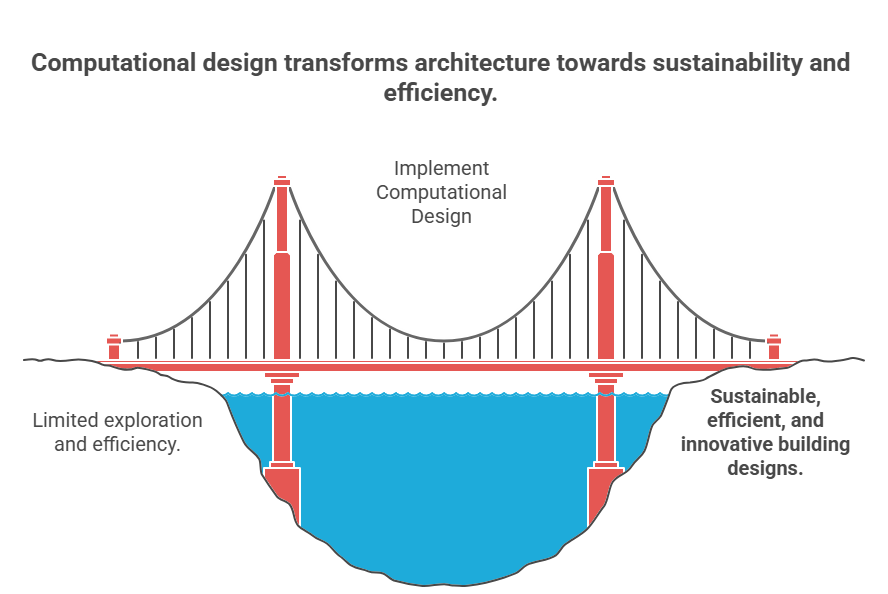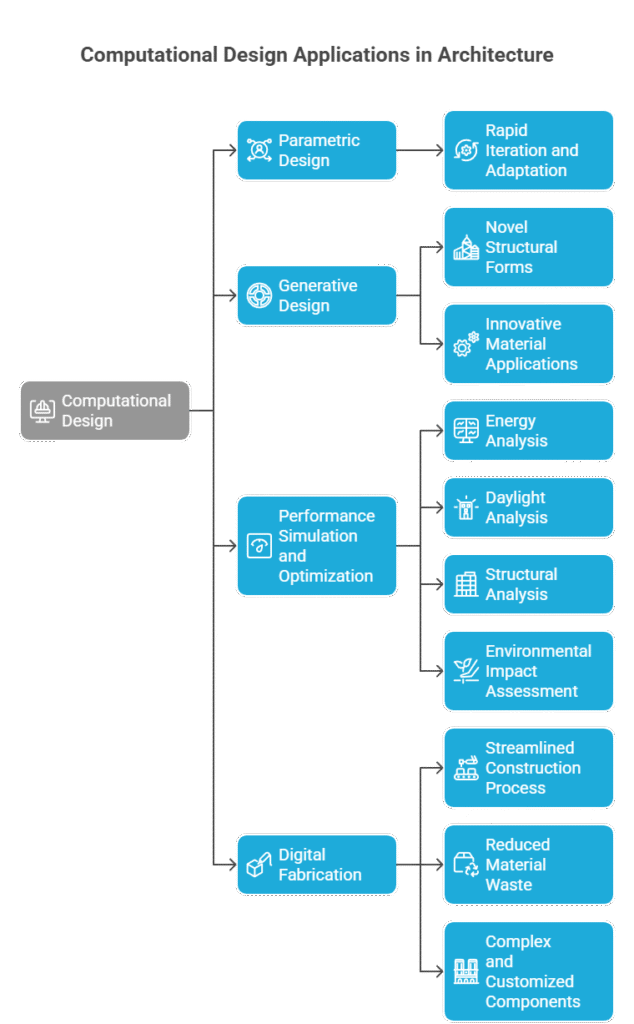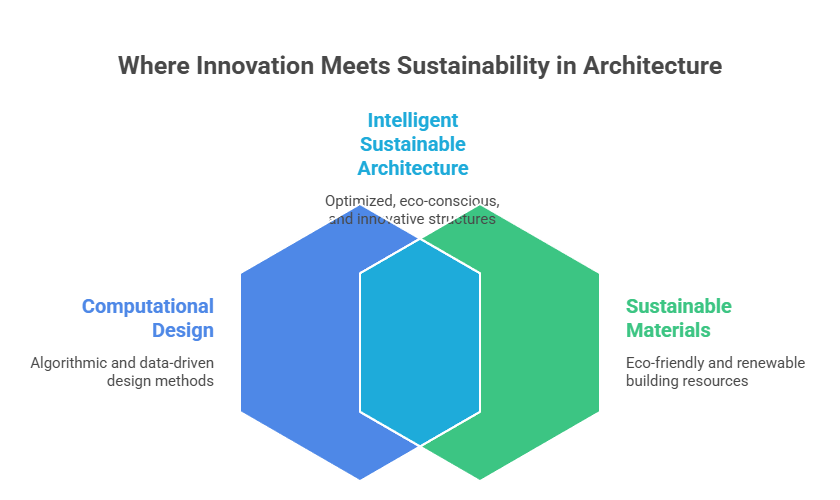Imagine a building that designs itself, optimizing for sunlight, structural integrity, and even the unique properties of its materials, all before a single brick is laid. Sounds like science fiction? Not anymore. Welcome to the world of computational design in architecture, where algorithms and advanced software are transforming how we conceive, create, and construct our built environment. This isn’t just about drawing on a computer; it’s about empowering architects with a new language to solve complex problems, push creative boundaries, and build a more sustainable future. If you’ve ever wondered how buildings can be smarter, more efficient, and truly responsive to their surroundings, then you’re about to discover the digital revolution that’s making it all possible.
The Digital Architect’s Toolkit: What is Computational Design?
At its core, computational design (CD) in architecture is the application of computer algorithms and computational techniques to generate, analyze, and optimize architectural designs [1]. It moves beyond traditional CAD (Computer-Aided Design) by allowing designers to define rules and parameters, rather than just drawing lines. Think of it as teaching a computer to think like an architect, but with the ability to process vast amounts of data and explore countless design variations at lightning speed. This approach enables architects to tackle challenges that would be impossible or incredibly time-consuming with conventional methods.
Beyond the Drawing Board: Why Computational Design Matters
Computational design isn’t just a fancy new tool; it’s a paradigm shift that offers significant advantages for architects and the built environment. It empowers designers to explore and create in ways previously unimaginable. Instead of manually drawing every iteration, architects can now define a set of rules and allow the computer to generate thousands of design options, pushing the boundaries of complex geometries and innovative forms that might have been impossible to conceive through traditional methods [2]. This newfound freedom allows designers to focus on higher-level conceptual thinking, truly expanding the realm of architectural possibility.
One of the most powerful aspects of computational design is its ability to integrate performance analysis directly into the design process. Architects can simulate how a building will perform in terms of energy efficiency, daylighting, structural integrity, and even acoustics, all before construction even begins. This capability facilitates data-driven decisions that lead to more sustainable and efficient buildings [3]. For instance, a design can be meticulously optimized to maximize natural ventilation in a tropical climate, significantly reducing the need for artificial cooling and its associated energy consumption.
Furthermore, computational design brings unparalleled efficiency and automation to the architectural workflow. Repetitive and often tedious tasks, such as generating detailed drawings or calculating complex structural elements, can now be automated. This not only dramatically speeds up the design process but also minimizes human error, allowing architects to dedicate more of their valuable time to creative problem-solving and meaningful engagement with clients [4]. In an increasingly complex world, modern buildings often feature intricate geometries and demanding performance requirements. Computational design provides the essential tools to manage this inherent complexity, ensuring precise control and coordination of vast amounts of information, from the initial conceptual sketch to the detailed instructions for fabrication.
Finally, CD is opening exciting new doors for material innovation. It allows architects to gain a deeper understanding of how various materials behave, even those with inherent variability. By simulating material performance under different conditions, designers can push the boundaries of material use, leading to more efficient and innovative structures. This is particularly crucial for natural, sustainable materials, which often possess less predictable characteristics than their manufactured counterparts, enabling their integration into cutting-edge designs.
Computational Design in Action: Real-World Applications
Computational design is not merely theoretical; it is actively transforming various aspects of architectural practice today. One of its most common applications is Parametric Design, where design elements are defined by parameters and their intricate relationships. This means that changing one parameter automatically updates all related elements, allowing for rapid iteration and adaptation. It’s like having a dynamic model that intelligently responds to every design adjustment, offering unparalleled flexibility.
Taking this concept a significant step further, Generative Design employs algorithms to automatically generate a multitude of design alternatives based on a predefined set of goals and constraints. The architect sets the rules, and the computer then explores a vast solution space, presenting optimal or near-optimal designs [5]. This powerful capability is where the subtle threads of my own research begin to weave into the broader narrative, as generative design becomes a core component in exploring novel structural forms and innovative material applications, particularly for challenging yet sustainable resources.
Beyond generating forms, CD tools are invaluable for Performance Simulation and Optimization. This includes a range of critical analyses, such as energy analysis to predict heating, cooling, and lighting loads; daylight analysis to optimize natural light penetration and reduce glare; structural analysis to ensure the stability and efficiency of structural systems; and environmental impact assessment to evaluate the embodied energy and carbon footprint of materials and designs.
Finally, the seamless integration of computational design extends to Digital Fabrication. Computational models can be directly translated into precise instructions for digital fabrication machines, such as 3D printers and CNC routers. This direct link streamlines the construction process, significantly reduces material waste, and enables the creation of highly complex and customized building components with unprecedented accuracy.
References
[1] Novatr. (2022, December 29). Understanding Computational Design (The Ultimate Guide). Retrieved from https://www.novatr.com/blog/computational-design-guide
[2] Futurly. (2023, August 14). The Role of Computational Design in Architecture: 6 Ways it Will Change the Way You Work. Retrieved from https://www.futurly.com/blog/the-role-of-computational-design-in-architecture
[3] ArchSmarter. (2024, January 26). 5 Ways Computational Design Will Change the Way You Work. Retrieved from https://www.archsmarter.com/blog/computational-design
[4] Technostruct. (2024, March 12). The Role of Computational Design in Architecture. Retrieved from https://www.technostruct.com/blog/2024/03/12/the-role-of-computational-design-in-architecture/
[5] Novatr. (2024, August 14). Generative Design in Architecture: Everything You Need to Know. Retrieved from https://www.novatr.com/blog/generative-design-architecture
The Future is Now: Designing with Intelligence and Sustainability
Computational design is not just a trend; it’s the inevitable evolution of architectural practice. It empowers architects to move beyond traditional limitations, creating buildings that are not only visually stunning but also highly efficient, responsive, and sustainable. By embracing algorithms and data, we can unlock unprecedented possibilities in design, from optimizing complex geometries to understanding and leveraging the unique properties of natural materials.
This journey into computational design is particularly exciting when considering its potential for sustainable materials. Imagine a future where we can precisely model and optimize structures made from rapidly renewable resources, like bamboo, accounting for their natural variations to create resilient and beautiful buildings. This approach promises to revolutionize how we build, fostering a deeper connection between technology, nature, and human well-being. As we continue to explore these frontiers, computational design will undoubtedly play a pivotal role in shaping a more intelligent and sustainable built environment for generations to come.



